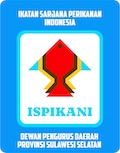Risk Analysis of Fresh Lemuru Fish Supply Chain at Banyuwangi Port
DOI:
https://doi.org/10.35911/torani.v7i1.26959Keywords:
supply chain, risk management, lemuru fishAbstract
The abundance of lemuru fishery products around Coastal Fisheries Port in Muncar has led to the growth of a processing industry cluster made from lemuru fish which produces canned fish (sardines, tuna), fish flour and oil as well as frozen fish around Muncar port. Factories or industries whose raw materials require a large amount of money to move materials that are easily damaged will tend to choose their industrial locations around sources of raw materials. This shows that Indonesian people are aware of the nutritional contribution of consuming fish. The amount of production and consumption of this fish is also influenced by the season and weather so that the supply of caught fish is uncertain but the demand for fish is always increasing. Apart from that, other risks are inaccurate knowledge of fish handling, the distribution of caught fish that takes too long affects the decrease in the quality of fresh caught fish and the selling price of caught fish. Flying fish at Muncar Fishery Port is very dependent on the fishing season, so the availability of supplies fluctuates. The purpose of this study was to identify the supply chain structure and supply chain risks for lemuru at Muncar Fishery Port, analyze the highest risk factors in the lemuru supply chain at Muncar Fishery Port at each tier of fishermen, collectors and traders and recommends supply chain risk mitigation for lemuru fish for each tier at the Muncar Fishery Port based on risk identification.
References
Anonim. (2022). Kabupaten Banyuwangi dalam Angka 2022. In BPS Kabupaten Banyuwangi. Banyuwangi. Retrieved from https://banyuwangikab.bps.go.id/publication/2022/02/25/4e5ed690c36051962d779bd3/kabupaten-banyuwangi-dalam-angka-2022.html
Guritno, A. D., and Khuriyati, N. (2018). An Application of RapAgRisk (Rapid Agricultural Supply Chain Risk Assessment) Method on Fresh Vegetables for Identifying and Reducing Damage during Delivery to Consumers. KnE Life Sciences, 4(2), 1. https://doi.org/10.18502/kls.v4i2.1651
Purwaningsih, R. (2015). Analisis Nilai Tambah Produk Perikanan Lemuru Pelabuhan Muncar Banyuwangi. Jurnal Ilmiah Teknik Industri, 14(1), 13–23.
Rizkina, F. D. (2020). Risk mitigation and structure analysis of logistics cost for marketing pindang fish supply chain in bawean island , Gresik , East Java. 1, 41–44.
Rizkina, F. D., and Nalawati, A. N. (2022). Pemetaan rantai pasok jeruk siam (Citrus nobilis) menggunakan analisis nilai tambah dan analisis struktur logistik. Desember, 16(4), 507–518. https://doi.org/10.21107/agrointek.v16i4.13523
Rizkina, F. D., and Widodo, K. H. (2020). An Application of Rapid Agricultural Risk Assessment to Manage Citrus nobilis var. microcarpa Damage in Indonesia. The Future Opportunities and Challenges of Business in Digital Era 4.0, 151–154. Taylor & Francis Group.
Sodhi, M. M. S., and Tang, C. S. (2018). Corporate social sustainability in supply chains: a thematic analysis of the literature. International Journal of Production Research, 56(1–2), 882–901. https://doi.org/10.1080/00207543.2017.1388934
Waters, D. (2007). Supply Chain Risk Management: Vulnerability and Resilience in Logistic. The Chartered Institute of Logistics and Transportation. London.
Winarni, T., Swastawati, F., Darmanto, Y. S., dan Dewi, E. N. (2003). Uji Mutu Terpadu pada Beberapa Spesies Ikan dan Produk Perikanan di Indonesia. In Laporan Akhir Hibah Bersaing XI Perguruan Tinggi. Semarang. Universitas Diponegoro.















